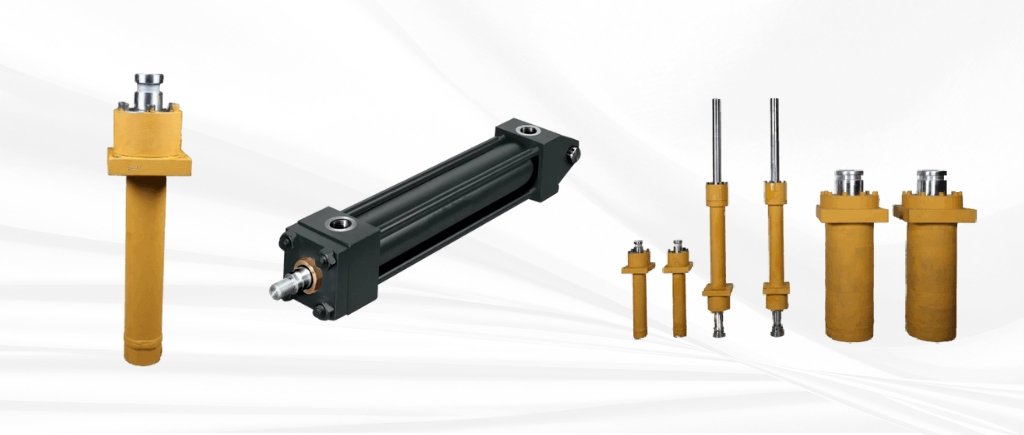Hydraulic Cylinder Seals Materials and their Importance
Hydraulic cylinder seals are critical components in hydraulic systems, serving to contain pressurized fluid, prevent contamination, and maintain the necessary pressure for efficient operation. The selection of appropriate seal materials is paramount, as it directly influences the performance, durability, and reliability of hydraulic cylinders. This article delves into the various materials used for hydraulic cylinder seals and underscores their significance in ensuring optimal functionality.
The Role of Hydraulic Cylinder Seals
In hydraulic systems, seals perform the essential function of preventing fluid leakage between different components. They are strategically placed to contain hydraulic fluids, exclude contaminants, and sustain the pressure required for system operation. By maintaining the integrity of the hydraulic fluid, seals facilitate the conversion of fluid power into linear motion, which is fundamental to the operation of machinery such as excavators, bulldozers, and cranes.
Types of Hydraulic Cylinder Seals
Hydraulic seals can be categorized based on their function and location within the cylinder:
Piston Seals
Positioned within the cylinder barrel, piston seals create a barrier between the piston and the cylinder bore. Their primary role is to contain pressurized hydraulic fluid on one side of the piston, enabling the cylinder to generate force in a specific direction. These seals must withstand high pressure and dynamic movement, making material selection critical to their performance.
Rod Seals
Installed on the piston rod, rod seals prevent hydraulic fluid from leaking out of the cylinder. They are dynamic seals that must endure the constant motion of the rod and the high pressure within the cylinder. The effectiveness of rod seals is vital for the overall efficiency of the hydraulic system.
Wiper Seals
Located on the external side of the cylinder, wiper seals prevent dirt, debris, and other contaminants from entering the hydraulic system. By keeping the system clean, wiper seals protect internal components from damage and wear.
Materials Used in Hydraulic Cylinder Seals
The performance and longevity of hydraulic cylinder seals are heavily influenced by the materials from which they are made. Common materials include:
Nitrile Rubber (NBR)
Also known as BUNA, NBR is a general-purpose seal material prevalent in fluid power applications, particularly O-rings. It is extremely versatile, has a good temperature range (-40°C to 100°C), and exhibits excellent abrasion resistance, high tensile strength, and compression resistance. NBR is compatible with a wide range of oils and fluids, making it a popular choice for various hydraulic applications.
Polyurethane (PU)
Polyurethane seals offer good abrasion and tear resistance, making them suitable for applications involving high wear. They provide a balance between flexibility and toughness, which is beneficial in dynamic sealing applications.
Polytetrafluoroethylene (PTFE)
PTFE, is used in seals that require high chemical resistance and can operate in a wide temperature range. PTFE seals are often employed in environments where exposure to corrosive fluids or high temperatures is a concern.
Fluorocarbon Elastomers (FKM)
Known for their high-temperature resistance and chemical stability, fluorocarbon elastomers are suitable for applications involving exposure to aggressive fluids and elevated temperatures.
Importance of Material Selection
Selecting the appropriate material for hydraulic cylinder seals is crucial for several reasons:
Temperature Resistance
Different materials have varying capabilities to withstand temperature extremes. For instance, NBR performs well in temperatures ranging from -40°C to 100°C, making it suitable for many hydraulic applications.
Chemical Compatibility
The seal material must be compatible with the hydraulic fluid and any other chemicals it may encounter. Incompatibility can lead to swelling, hardening, or degradation of the seal, resulting in leaks or failures.
Wear Resistance
Seals are subject to friction and wear due to the dynamic nature of hydraulic systems. Materials like polyurethane are chosen for their excellent abrasion resistance, extending the service life of the seal.
Pressure Tolerance
Hydraulic systems operate under high pressure, and the seal material must be able to maintain its integrity without deforming or failing.
Impact of Seal Material on Hydraulic System Performance
The choice of seal material directly affects the efficiency and reliability of hydraulic systems:
Leak Prevention
High-quality seals made from appropriate materials prevent hydraulic fluid leakage, maintaining system pressure and performance.
Contamination Exclusion
Effective seals keep contaminants out of the system, protecting sensitive components from damage and reducing maintenance requirements.
Operational Efficiency
Seals that maintain their properties under operating conditions ensure smooth movement of hydraulic cylinders, contributing to the overall efficiency of the machinery.
Hydraulic cylinder seals are indispensable components that ensure the proper functioning of hydraulic systems. The selection of suitable seal materials, such as Nitrile Rubber, Polyurethane, PTFE, and Fluorocarbon Elastomers, is vital to address the specific demands of temperature, chemical exposure, wear, and pressure in various applications. Understanding the properties and compatibilities of these materials enables engineers and maintenance professionals to enhance the performance, reliability, and longevity of hydraulic systems, thereby supporting the effective operation of machinery across diverse industries.


